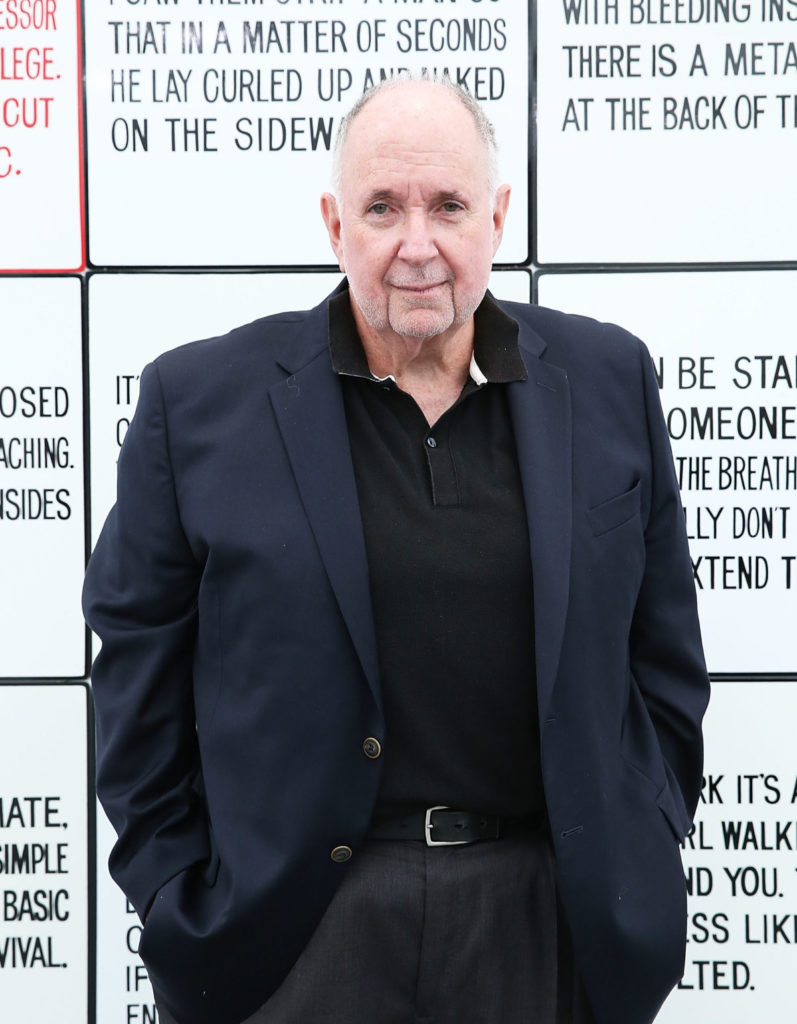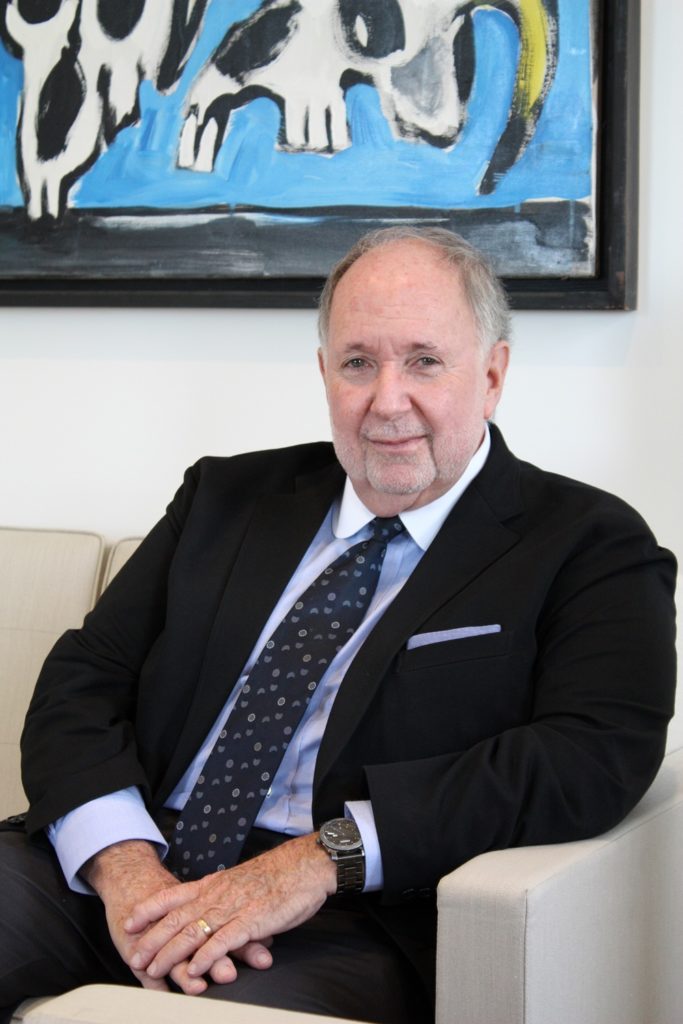People
Phillips Senior Advisor Arnold Lehman on Rudy Giuliani, the Perks of the Auction World
The former director of the Brooklyn Museum discusses his current role at the auction house.

The former director of the Brooklyn Museum discusses his current role at the auction house.

Eileen Kinsella

Arnold Lehman turned some heads when, just over a year ago, he left his post as the director of the Brooklyn Museum (where he had been since 1997) and took a position at Phillips as senior advisor to the auction house’s CEO Ed Dolman, a new role that was created specifically for him. Lehman had announced his retirement from the museum a year earlier.
In anticipation of this week’s auctions, and, in particular, Phillips’s 20th Century and Contemporary Art sale on November 16, where a few astounding lots will be on offer—including Gerhard Richter’s Düsenjager (1963), consigned by Paul Allen (estimated to sell for up to $35 million), as well as a painting by Roy Lichtenstein that had been slashed by mentally unstable woman while on loan to a museum in Austria in 2005 (estimated to sell for $20 million)—we sat down with the always animated and entertaining Lehman.
Lehman spoke to artnet News about the highlights of his tenure at the museum, what prompted his decision to make the leap to the commercial realm, and how the skills he acquired at an institution are oddly advantageous at an auction house.

Arnold Lehman. Photo by Rita Salpietro.
On leaving the museum world and joining the auction realm:
“It’s interesting what people talk to me about at cocktail parties now. They ask me about the market. They would have never done that previously.”
How he views the change to commercial from the not-for-profit world:
“It’s not all ‘going to the dark side’ the way some people suggest. At one point people suggested if you went from a museum to a gallery, or to an auction house, you were going from the light to the dark.
I think there is great porosity today. When I was director of the museum I hired people who had solid backgrounds at different auction houses, whether the strengths were people skills or visual skills. I think it translates very well. It’s nice to have people who have been on the for-profit side, who understand how you set goals and translate for the not-for-profit. I’ve had a terrific past history with the auction houses primarily in New York. The staff are incredibly well trained and sometimes even more visually acute than some curators and many museum directors.”
His prior involvement with auctions:
“I worked with the auction world for years but more as a seller than a buyer. It’s difficult for museums to buy at auction. As opposed to the individual collector who sets his or her own number or bidding limit, you usually have that number set by a committee at a museum. And because of that you take your life in your hands if you go beyond that number. We always used to try to get a number ‘plus one’ so if you were on the wrong side of the bidding structure or you’d gotten to a point where one more bid might make the difference, you’d always try to add that.”
How he came to be considered for a role at Phillips:
“Before I announced I was leaving the museum, I had a conversation with Ed Dolman, who I’d known since the late 1990s when he was head of Christie’s. I’ve always thought Ed is fantastic and a little larger-than-life and very attuned to art. I actually went to Ed to help support our ‘Sensation’ exhibit (1999-2000) and Christie’s donated $50,000. When he knew I was going to retire, he asked if I would think of coming to Phillips, and I said ‘Let me think about it.’ In the end one of the main attractions in my decision was the chance to work with Ed.”
What the current role entails:
“My title is actually advisor to the chair and CEO—both of whom are Ed—so hopefully that advice grows out of taking advantage of my experience within a different part of the community. I recently went to South Africa to meet with people who are representative of the sort of infrastructure of the art world: dealers, collectors, museum people, artists. It’s a really vibrant place. We want to think more holistically in terms of what we can do. Can we do auctions there? Can we bring those artists to New York or London and help generate more enthusiasm for what’s going on in South Africa. There are really terrific young artists working there. The art world is not just confined to New York, London, Los Angeles, Chicago, Paris. There is also a tremendous amount of interesting work coming out of the Middle East right now too.”
On providing museum support:
“I’m very much involved with museums, primarily in the US and Western hemisphere, and that is to help support projects, programs, and exhibits that museums are doing. It’s nice to be on the other side. I mean I always used to go to Phillips and Christies and Sothebys to see if they wanted to be supportive of the museum, so its great to have that turn the other way. We supported Robert Mapplethorpe at LACMA, which is an extraordinary exhibit. Most recently we supported the Kerry James Marshall show [that just opened at the Met Breuer]. We also supported the original show in Chicago. He’s a great artist, his was one of the very first shows I did when I came to Brooklyn, before he was such a celebrity. We don’t have as large a budget as some of our competitors, but that’s growing as well, and its really good to see how a little bit of money goes a long way in helping to get something done.”
On “Sensation” the controversial 1999-2000 show of YBAs that pitted the museum against then New York City mayor Rudy Giuliani:
“It was not an entirely happy moment. If you had to have bodyguards for weeks the way I did, with death threats, you would not be happy. We first had federal district court hearings, where the judge found in our favor and Giuliani appealed and went to the US Court of Appeals. The litigation went on for about six months, with the Museum vindicated at the end. During the entire time, the museum was drawing enormous crowds of people. We had more people than we could admit with lines hours long.”
Did you have doubts about going forward with the show?
“During that time period a lot of arrests were made, and artists’ studios and galleries were raided without warrants and the police confiscated things. We were concerned that we were the center of that hurricane. They sent people to investigate everything about us.”
On the perks of working at an auction house?
“Every day there are things that are really engrossing. Specialists working at Phillips come to me with questions about artists that I’ve had long experience with. I have all of these opportunities and exciting developments I’m involved in to one degree or another. I don’t have to do a budget for a big operation, and I don’t have 400 staff members to deal with on a daily basis, despite the fact that they were terrific and I loved all of them. It’s a little bit more focused and a little bit more on my own schedule.”
On the difference between working at a museum vs. an auction house:
“When I first got to Phillips, there were some Cindy Shermans hanging in the office where I was. I had a knock on the door, and a very nice young man came in and said, ‘I’m sorry I need to remove the works from your office because of the upcoming auction,’ and I replied: ‘Fine.’ He came in with white gloves, just the way we used to do in the museum, took the works off the wall, put them on a cart and took them away. A few moments later, another staffer appeared to spackle and repaint the spots. He was in and out within five minutes. That would have taken three months at the museum. Things move at the pace that’s appropriate for what you’re doing. It’s not because the museum delayed in what it did but because people were assigned to different things. The registrar had to be involved, the art handlers had to be involved, and the conservators, and my office staff.”